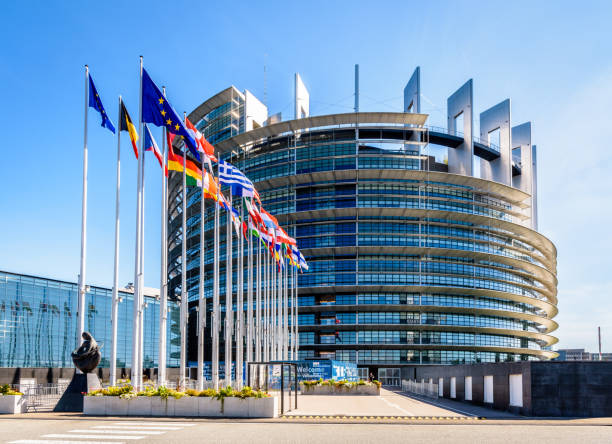
23
Sep 2025
The European Union (EU) has adopted a coordinated plan to prepare for the eventual end of temporary protection for more than four million displaced Ukrainians, while extending their legal status until March 2027.
The framework sets out how member states should guide refugees toward national residence permits or voluntary return once conditions in Ukraine allow, balancing humanitarian needs with long-term reintegration.
Temporary protection extends to 2027
The decision, agreed by EU governments on September 16, 2025, follows the Council’s earlier move in June to extend temporary protection for Ukrainians by one year, until March 4, 2027.
This protection grants beneficiaries residence rights, access to housing, education, medical care, and the labor market across the EU.
Kaare Dybvad Bek, Denmark’s Minister for Immigration and Integration, said that the transition plan is intended to ensure “a gradual and sustainable reintegration” when return becomes feasible.
A legal framework with clear timelines
Temporary protection was first activated in March 2022 under the EU’s 2001 directive, a mechanism designed for mass influx situations.
The scheme was extended three times: in October 2023, June 2024, and July 2025, reflecting the continuing impact of Russia’s war on Ukraine.
The current extension runs to March 2027, but the Council recommendation emphasized that the status is temporary by definition. Member states are urged to prepare national solutions that allow Ukrainians to remain legally once EU-level protection expires.
Options include residence permits for employment, study, research, family ties, or other grounds.
Those eligible under EU law may also apply for authorizations such as the Blue Card for highly qualified workers, but cannot hold such permits while simultaneously benefiting from temporary protection.
Supporting voluntary return, reintegration
The transition plan also highlights voluntary return as a key element. Member states are encouraged to establish coordinated return programs, in consultation with Ukrainian authorities, to help displaced people resettle.
These schemes should cover housing, access to healthcare, and community reintegration rather than focusing solely on individual support packages.
Voluntary return programs are expected to last at least one year after protection ends, with the possibility of extension depending on conditions in Ukraine. During this period, participants would keep their protection rights—such as healthcare and education—until departure.
Exploratory visits are also part of the framework. Ukrainians could travel temporarily to their home regions to assess conditions, check on property, or reconnect with relatives before deciding to return permanently.
Such visits would be self-funded but organized under harmonized rules across the EU.

(Image courtesy of Oleksandr Zinchenko via iStock)
Safeguards for vulnerable groups
The recommendation instructs governments to account for special cases. Children enrolled in schools should be allowed to complete the academic year, even if temporary protection expires before then.
People with specific needs, such as medical or social support, may be granted extended stays if Ukraine is not yet able to provide adequate care.
Unity Hubs—information centers supported by EU funding—are proposed to assist displaced people with paperwork, job searches, and return logistics. These hubs would also provide clear guidance on rights, legal status options, and reintegration support.
Scale of displacement, EU response
Since Russia’s full-scale invasion in 2022, more than 4.3 million Ukrainians have sought refuge in the EU under the temporary protection scheme.
The mechanism was designed to ease pressure on national asylum systems by granting immediate group-based protection without requiring individual asylum claims.
The EU has allocated €17 billion to support member states hosting refugees, covering housing, healthcare, education, and childcare. Additional technical and operational support has been provided to border guards and asylum agencies.
Humanitarian aid remains significant. Between 2022 and 2025, the EU and its member states dedicated €4.2 billion to emergency support, including food, shelter, medical care, and education for displaced Ukrainians.
Financial, reconstruction assistance
Broader EU support to Ukraine has reached €172.5 billion since 2022, covering financial, humanitarian, and military aid.
The Ukraine Facility, established in March 2024, provides €50 billion in stable financing for recovery and modernization between 2024 and 2027.
As of August 2025, €31.3 billion under the Facility had already been mobilized to fund reforms and reconstruction projects aligned with Ukraine’s accession process.
The EU has also coordinated with G7 partners on loan guarantees and created mechanisms to use extraordinary revenues from immobilized Russian central bank assets to support Ukraine’s defense and reconstruction.

(Image courtesy of Anze Furlan / psgtproductions via iStock)
Military, security support
Alongside civilian protection, the EU has invested heavily in Ukraine’s defense. Since 2022, €63.2 billion in military aid has been provided, including €6.1 billion through the European Peace Facility.
The EU Military Assistance Mission, launched in November 2022, has trained more than 80,000 Ukrainian soldiers.
A dedicated Ukraine Assistance Fund was added to the European Peace Facility in 2024 to strengthen long-term security commitments.
War crimes accountability, child protection
EU institutions have also prioritized justice and child protection. In May 2025, a Special Tribunal for the Crime of Aggression against Ukraine was endorsed by the EU, the Council of Europe, Ukraine, and partner states.
Eurojust, the EU Agency for Criminal Justice Cooperation, has coordinated evidence-sharing and case-building since 2022. It hosts the International Centre for the Prosecution of the Crime of Aggression in The Hague.
The EU has also mobilized €100 million for children’s education and protection in Ukraine, supporting school rehabilitation, mine risk awareness, and psychosocial aid.
Preparing for long-term outcomes
Officials stressed that the transition framework is not a call for immediate return, but a necessary step in preparing for the future.
“It is common sense to prepare for the day when the situation allows for the Ukrainian people to return home,” said Kaare Dybvad Bek.
Polish Interior Minister Tomasz Siemoniak, speaking when the extension was agreed in June, said that the EU would continue to offer protection but also start planning for “common, EU-wide solutions” on returns once peace is secured.
The Council recommendation underscores the importance of coordination among member states, with data sharing and regular updates on displaced persons’ status through EU-wide platforms.

(Image courtesy of olrat via iStock)
Travel rules on visitors, migrants
The EU’s decision to extend protection for Ukrainians comes as two new border systems are about to launch.
The Entry/Exit System (EES), starting in October 2025, will track when non-EU citizens enter and leave Schengen countries by using fingerprints and facial scans instead of passport stamps.
The European Travel Information and Authorisation System (ETIAS), planned for late 2026, will require travelers from 59 visa-free countries to apply online before visiting Europe.
For short-term visitors, this means their stays will be monitored more closely, with automatic checks on the 90-day-in-180-day rule.
For Ukrainians moving from temporary protection to regular residence permits, the systems will make sure that only people with a valid status can travel and return.
By linking refugee plans with these border changes, the EU is tying its protection policy to the new travel rules.
Added connection to immigration
The Council’s plan to wind down temporary protection pushes member states to shift Ukrainians into standard residence permits, such as for work, study, or family reasons.
This reduces reliance on emergency rules and connects refugees more directly to national immigration systems.
The rollout of EES and ETIAS also shows a broader shift toward digital border checks and stricter monitoring of movement.
Countries like Poland and Germany, which host many Ukrainians, will need to adjust their asylum and migration systems to fit this new approach.
The plan also calls for closer coordination between EU governments, aiming to reduce differences in national policies and share responsibility more evenly.
A shared path forward
The EU’s plan for the transition from temporary protection for displaced Ukrainians shows its effort to give both safety now and a path for the future. Member states will offer legal residence options to those who qualify, while also helping people return to Ukraine once it is safe.
For Ukrainians living in the EU since 2022, this gives clear choices about staying or returning. For Ukraine, it makes sure that people come back when the country can support them again.
This matters because temporary protection cannot last forever, and people need certainty about their rights. With EU aid and rebuilding efforts underway, these policies raise a simple question: where will millions of Ukrainians choose to build their futures?